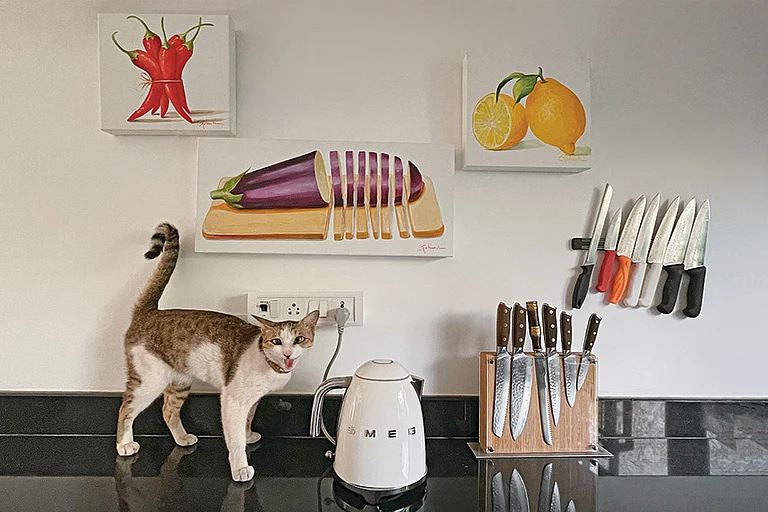Click On The Right Answer
- People with low access to computers will be at a disadvantage, raising issues of inclusiveness
- Basic computer skills—use of the mouse and keyboard—are required
- While the format remains unchanged, navigating the interface and managing time efficiently remain areas of concern
- Managing multiple papers—and maintaining security—will be key to the success of the new system
***
Jatin Shah, all of 22, is stressed out—not because he’s busy counting the days to the Common Admission Test (better known as CAT, the holy grail for entry into India’s premier management institutes). He’s tossing and turning trying to figure out the ‘right’ day and time to take the exam that could change his life. Here’s why: under the new all-computer format, the exam is spread over 10 days (in November-December this year) with two time slots on each day. That’s a huge change from the standardised paper for all centres on one day.
“I keep thinking, what if I choose ‘day one’ and it turns out to be the most difficult. I know there’s no way to figure out the right day, but I don’t want to lose out for being unlucky,” says Jatin. His parents—and elder brother, who took the CAT two years ago—have been telling him to stop fretting about the timing. But they realise the changed format (from pencil-on-paper to mouse-on-screen) adds a new source of tension to the equation. It’s clearly got students and training centres rattled—they are scrambling to adapt to the change and address concerns from worried students.
The new format raises several concerns, with computer proficiency topping the list. A bulk of the over 2.5 lakh students who take CAT each year hail from small towns and may not have regular access to computers. While it is true the test is not actually online (it is an offline, computer-based test) and requires nothing more than familiarity with a keyboard and mouse, training centres feel it creates imbalances.
“It definitely demarcates students in the cities, more comfortable with computers, versus those in the hinterland,” says Gautam Puri, an IIM alumnus and co-founder of Career Launcher. Several training centres say they’ve seen a drop in the number of students opting for CAT training from the hinterland. They maintain that while the numbers in large cities have held up, the smaller ones have witnessed a 5-20 per cent drop. Though the economic downturn is touted as one reason, most of the apprehensions relate to the new exam system.
But the IIMs obviously don’t agree. The director of IIM-A, S. K. Barua, feels the concern about computer proficiency is unjustified given that students applying for CAT are all graduates and have basic computer training at their colleges. “You have to understand that CAT becoming computer-based solves other problems like providing more than one opportunity to students to write the exam in a year and eliminating the problem of leaks,” he adds.
Given the most critical factor in any competitive exam is time management, training centres aver that students will struggle on this count. “It’s one thing to spend time reading a comprehension passage on paper where you can make markings as you read, and quite another to read a large passage on screen. Even those familiar with computers need to practise to master the art of time management,” says Vinayak Kudva, national head (products), IMS Learning Resources. This is borne out by this correspondent’s attempt at the mock test on the CAT website (13 years, it must be disclosed, after unsuccessfully taking the test). Time taken over each question is definitely a challenge.
The training institutes have all added computer labs, typically investing about Rs 2 crore to ramp up facilities. Some are also offering CDs with mock tests that students can take home. The key, say experts, is practice. However, conceptual understanding in the three sections of data interpretation, problem-solving and English remains a large chunk of the training module—which is still facilitated by books and reading material. Most experts agree the basic format of the exam hasn’t changed—you still have to study the old-fashioned way to gain conceptual clarity. That remains the formula to bell the CAT.
Training centres don’t see infrastructural problems like power cuts at the testing centres in 30-odd cities. These potential glitches have been factored in. There are other concerns, of course. Like ensuring that the balance between the easy and difficult questions will be the same across the multiple papers. The method by which ranking and grading will take place also remains the subject of much debate. Some argue the system should be based on percentiles rather than absolute marks, as is prevalent now. IIM’s Barua clarifies the marking system will remain the same as it is for the paper-and-pencil test.
All said and done, CAT is not the first computer-based competitive exam. The GRE and GMAT have been so for years—though there have been recent problems with GMAT in the US (when action was taken against a test preparation website in 2008 for posting “live” questions that were being used in the actual GMAT exam). The numbers are much larger here. “Neither GMAT nor GRE have that many number of tests administered in just 10 days. I am sure IIMs would have factored this in and built robust systems,” says K.S. Baskar, director at Ascent Education.
The new format is definitely going to require a period of adjustment. It is too early to say whether the changes will affect the test’s very sanctity, or diminish its inclusiveness. In the meantime, students appearing for the exam this year can only keep their heads down, study hard, practise even harder at the computer and hope for the best. That basic formula remains unchanged.


























